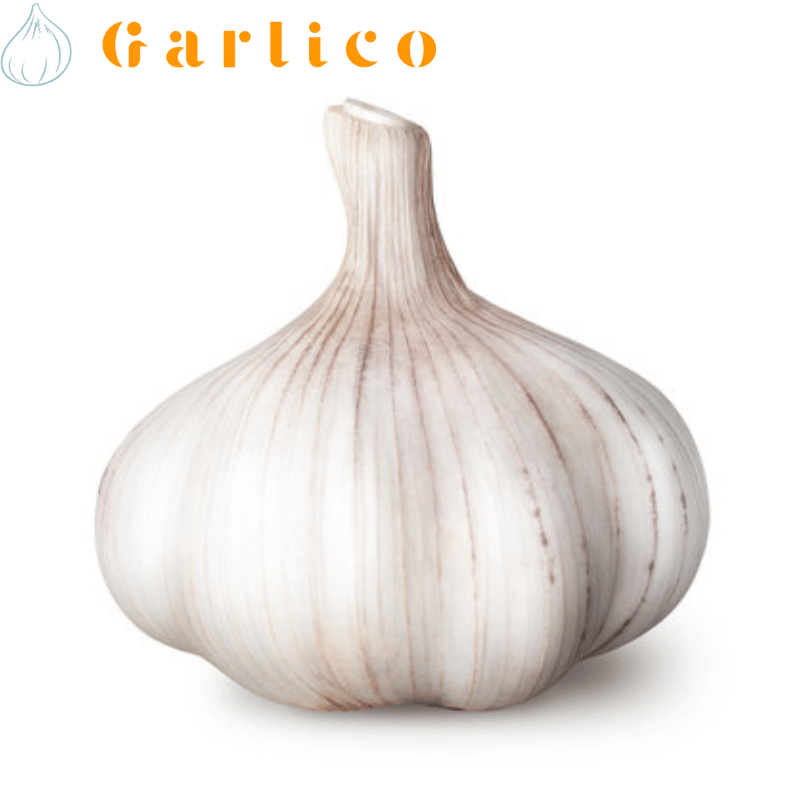Garlic is a staple ingredient in many cuisines around the world, known for its pungent flavor and numerous health benefits. However, for those who prefer a milder and sweeter taste, elephant garlic offers a delightful alternative. Despite its name, elephant garlic is not actually a true garlic but rather a close relative of the leek. In this article, we will explore the allure of elephant garlic, its unique flavor profile, and why it has become a popular choice for those seeking a milder garlic experience.
- What is Elephant Garlic?
1.1 The Basics
Elephant garlic, scientifically known as Allium ampeloprasum, is a plant that belongs to the Allium family, which also includes onions, leeks, and chives. It is native to the Mediterranean region and has been cultivated for centuries for its culinary and medicinal properties. Elephant garlic is characterized by its large bulb, which can grow up to three times the size of a regular garlic bulb. Despite its size, the flavor of elephant garlic is milder and sweeter compared to traditional garlic.
1.2 Distinctive Features
One of the most noticeable features of elephant garlic is its bulb size. The bulbs can reach diameters of up to 4 inches (10 cm) and can weigh several ounces. The cloves inside the bulb are also larger than those of regular garlic, making them easier to peel and handle. The outer skin of elephant garlic is typically a pale white or light purple color, and the cloves have a creamy white appearance. These distinctive features make elephant garlic a visually appealing ingredient in the kitchen.
- Flavor Profile
2.1 Milder and Sweeter Taste
The flavor of elephant garlic is often described as milder and sweeter compared to regular garlic. While it still retains the characteristic garlic taste, it is less pungent and has a subtle sweetness that adds a unique dimension to dishes. This milder flavor profile makes elephant garlic a versatile ingredient that can be used in a wide range of recipes without overpowering other flavors. It is particularly popular among those who enjoy the taste of garlic but prefer a more subtle and delicate experience.
2.2 Cooking Applications
Due to its milder flavor, elephant garlic can be used in a variety of cooking applications. It can be used raw in salads and dressings, providing a gentle garlic flavor without overwhelming the other ingredients. Elephant garlic can also be roasted or sautéed, which brings out its natural sweetness and creates a rich and savory taste. Additionally, it can be used in soups, stews, and sauces, where its mild flavor can enhance the overall taste without dominating the dish.
- Health Benefits
3.1 Nutritional Value
Like regular garlic, elephant garlic is packed with essential nutrients and compounds that offer numerous health benefits. It is a good source of vitamins C and B6, as well as minerals such as manganese and selenium. Elephant garlic also contains allicin, a compound known for its antimicrobial and antioxidant properties. These nutrients and compounds contribute to the overall health-promoting properties of elephant garlic.
3.2 Potential Health Benefits
The consumption of elephant garlic has been associated with several potential health benefits. The allicin content in elephant garlic may help boost the immune system, reduce inflammation, and lower the risk of certain chronic diseases. Additionally, the antioxidants found in elephant garlic may have protective effects against oxidative stress and cellular damage. While more research is needed to fully understand the specific health benefits of elephant garlic, its nutritional profile suggests that it can be a valuable addition to a healthy and balanced diet.
- Culinary Uses and Tips
4.1 Culinary Versatility
Elephant garlic can be used in a wide range of culinary applications, just like regular garlic. It can be minced and added to sauces, marinades, and dressings to provide a
rich garlic flavor without overpowering the dish. Here are some popular culinary uses and tips for incorporating elephant garlic into your recipes:
4.2 Roasting
Roasting elephant garlic is a popular method that brings out its natural sweetness and creates a creamy, spreadable texture. To roast elephant garlic, simply cut off the top of the bulb to expose the cloves, drizzle with olive oil, and wrap it in aluminum foil. Place it in the oven at around 400°F (200°C) for about 30-40 minutes, or until the cloves are soft and golden brown. Once roasted, the cloves can be squeezed out and used as a spread on bread, mixed into mashed potatoes, or added to sauces for a rich and sweet garlic flavor.
4.3 Sautéing
Sautéing elephant garlic is another great way to enjoy its mild and sweet flavor. Start by peeling and thinly slicing the cloves. Heat some olive oil or butter in a pan over medium heat and add the sliced garlic. Sauté for a few minutes until the garlic becomes fragrant and slightly golden. Be careful not to burn the garlic, as it can turn bitter. Sautéed elephant garlic can be used as a topping for pasta, added to stir-fries, or incorporated into vegetable dishes for a subtle garlic taste.
4.4 Soups and Stews
Elephant garlic can be a flavorful addition to soups and stews, providing a gentle garlic flavor without overpowering the other ingredients. Simply mince or slice the cloves and add them to your favorite soup or stew recipe. The mild flavor of elephant garlic blends well with a variety of ingredients, such as vegetables, meats, and legumes, enhancing the overall taste of the dish.
4.5 Pickling
Pickling elephant garlic is a unique way to preserve its flavor and enjoy it as a tangy and slightly sweet condiment. Start by peeling the cloves and blanching them in boiling water for a couple of minutes. Drain the cloves and place them in a sterilized jar. In a saucepan, combine equal parts vinegar and water, along with some salt, sugar, and spices of your choice (such as peppercorns or bay leaves). Bring the mixture to a boil, then pour it over the garlic cloves in the jar. Seal the jar and let it cool before refrigerating. Allow the flavors to develop for a few days before enjoying the pickled elephant garlic as a topping for sandwiches, salads, or charcuterie boards.
- Availability and Storage
Elephant garlic is typically available in specialty grocery stores, farmers’ markets, or online. When purchasing elephant garlic, choose bulbs that are firm and free from mold or soft spots. Store elephant garlic in a cool, dry place, away from direct sunlight. It can be stored at room temperature for a few weeks or in the refrigerator for several months. To extend its shelf life, you can also freeze elephant garlic cloves by peeling and placing them in an airtight container or freezer bag.
Conclusion
Elephant garlic offers a milder and sweeter alternative to regular garlic, making it a versatile ingredient in the kitchen. Its large bulb size, distinctive appearance, and unique flavor profile make it a visually appealing and flavorful addition to a variety of dishes. Whether roasted, sautéed, or pickled, elephant garlic can enhance the taste of your favorite recipes without overpowering other ingredients. With its potential health benefits and culinary versatility, elephant garlic is a must-try for those seeking a milder and sweeter garlic experience.




